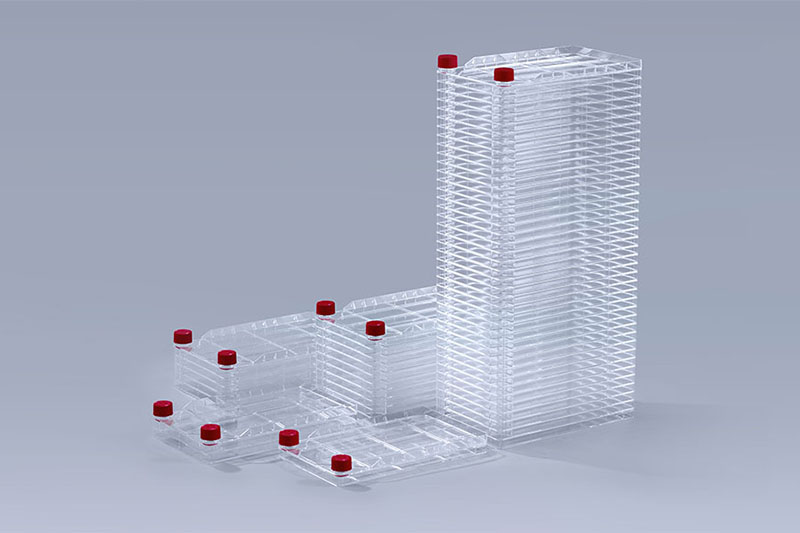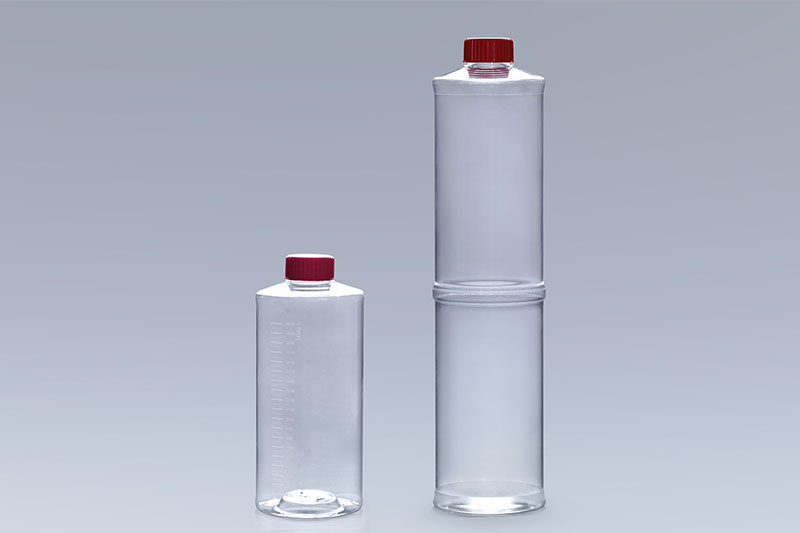Most of the cells cultured in vitro belong to adherent cells. The growth of this type of cells must have a support surface that can be attached. Cells can grow and reproduce on the surface by relying on the attachment factors secreted by themselves or provided in the medium. So, what are the requirements for cell culture consumables for adherent cells?
The anchorage-dependent cells should be attached to the wall of the culture (flask) vessel during culture. Once the cells are attached to the wall, they will spread rapidly, then start mitosis, and soon enter the logarithmic growth phase. Generally, after a few days, the culture surface will be covered and a dense monolayer of cells will be formed. Cell culture consumables for adherent cells include cell factory systems, cell culture plates, cell culture roller bottles, etc. At present, most of the cell consumables on the market are polymer materials such as PS, PC, which do not have glass materials. Due to its hydrophilic properties, the surface needs to be specially treated before it can be used for the culture of adherent cells. The specially treated cell culture consumables have hydrophilic groups introduced on the surface, which can allow cells to better attach to the consumables surface, which is conducive to the growth and reproduction of cells.
Cell growth requires a specific environment, such as carbon dioxide, PH value, sterility, osmotic pressure, etc., so cell culture consumables must be sterilized and put into use after reaching the conditions of DNase-free and RNase-free, so as to avoid affecting the progress of cell culture due to cell contamination.
Surface TC treatment and sterilization are two basic requirements for cell culture consumables for adherent cells, and also prerequisites for the smooth progress of cell culture work, so you need to be more cautious when choosing consumable products.
The FAI climbed 5.9 percent year-on-year in the first 11 months of 2018, quickening from the 5.7-percent growth in Jan-Oct, the National Bureau of Statistics (NBS) said Friday in an online statement.
The key indicator of investment, dubbed a major growth driver, hit the bottom in August and has since started to rebound steadily.
In the face of emerging economic challenges home and abroad, China has stepped up efforts to stabilize investment, in particular rolling out measures to motivate private investors and channel funds into infrastructure.
Friday's data showed private investment, accounting for more than 60 percent of the total FAI, expanded by a brisk 8.7 percent.
NBS spokesperson Mao Shengyong said funds into weak economic links registered rapid increases as investment in environmental protection and agriculture jumped 42 percent and 12.5 percent respectively, much faster than the average.
In breakdown, investment in high-tech and equipment manufacturing remained vigorous with 16.1-percent and 11.6-percent increases respectively in the first 11 months. Infrastructure investment gained 3.7 percent, staying flat. Investment in property development rose 9.7 percent, also unchanged.
 English
English



















































 Cell Factory Systems
Cell Factory Systems Cell Culture Roller Bottles
Cell Culture Roller Bottles